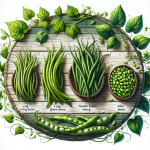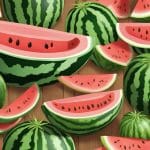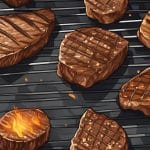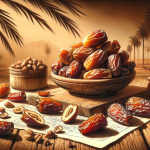Types Of Frosting
Frosting is a sweet, creamy topping that is commonly used to decorate cakes and other baked goods. It comes in various flavors, textures, and colors, making it a versatile ingredient that can be used to add a touch of elegance or whimsy to any dessert. Whether you’re a professional baker or a home cook, knowing the different types of frosting and how to use them can help take your desserts to the next level.
The basics of frosting involve sugar, fat, and flavorings, which are whipped together to create a smooth and creamy texture. While buttercream is the most popular type of frosting, there are several other types that can be used to add different flavors and textures to your desserts. Some of the most common types of frosting include royal icing, whipped cream, ganache, and glaze, each with its unique properties and uses.
Whether you’re looking to create a classic buttercream frosting or something more unique, such as a cream cheese frosting, there are several factors to consider, such as the type of cake you’re using, the occasion, and your personal preferences. By understanding the different types of frosting and their applications, you can create beautiful and delicious desserts that are sure to impress.
Key Takeaways
- Frosting is a versatile ingredient that can be used to add a touch of elegance or whimsy to any dessert.
- There are several types of frosting, including buttercream, royal icing, whipped cream, ganache, and glaze, each with its unique properties and uses.
- Understanding the different types of frosting and their applications can help you create beautiful and delicious desserts that are sure to impress.
Basics of Frosting
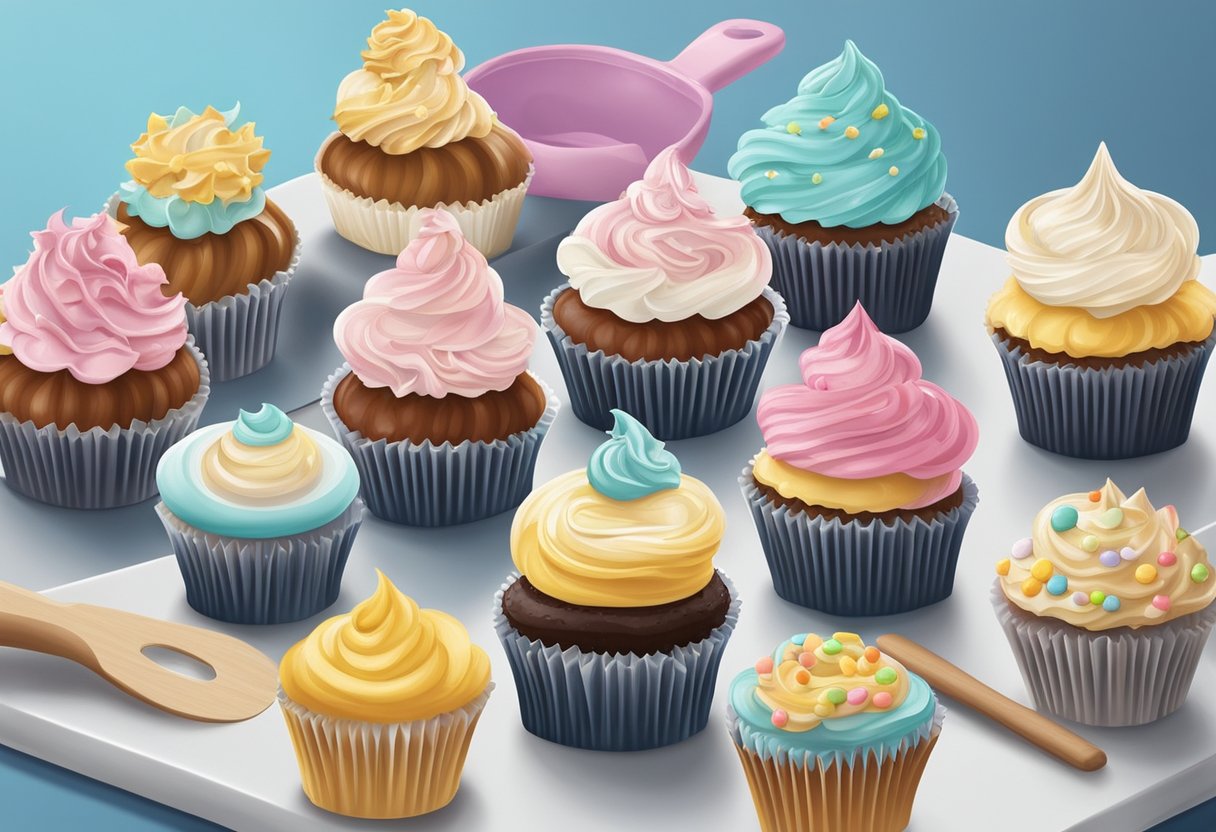
Ingredients and Functions
Frosting is a sweet mixture that is used to cover or decorate cakes, cupcakes, and other baked goods. The main ingredients of frosting are butter, sugar, and egg whites. Other ingredients such as cream, flavor, and color can also be added to enhance the taste and appearance of the frosting.
Butter is the primary fat used in frosting. It gives the frosting a creamy texture and a rich flavor. Sugar is added to sweeten the frosting and to give it structure. It also helps to stabilize the frosting and prevent it from melting. Egg whites are used to create a meringue, which adds volume and stability to the frosting.
The function of frosting is not only to add sweetness and flavor to a cake but also to create an attractive appearance. Frosting can be used to cover a cake completely or to create decorative designs. It can also be used to fill cakes or to create piped borders and rosettes.
Texture and Consistency
The texture and consistency of frosting can vary depending on the type of frosting and the ingredients used. Buttercream frosting, for example, has a creamy texture and can be spread easily. Royal icing, on the other hand, has a hard, glossy texture and is used for decorative purposes.
The consistency of frosting is also important. Frosting that is too thin will not hold its shape and will slide off the cake. Frosting that is too thick will be difficult to spread and may cause the cake to break. The consistency of frosting can be adjusted by adding more sugar or liquid.
In conclusion, frosting is an essential component of cake decorating. The ingredients used in frosting play a crucial role in determining its texture and consistency. By understanding the basics of frosting, one can create delicious and beautiful cakes that are sure to impress.
Types of Buttercream
When it comes to frosting, buttercream is one of the most popular choices. It’s creamy, sweet, and versatile, making it perfect for decorating cakes, cupcakes, and other desserts. Here are the most common types of buttercream:
American Buttercream
American buttercream is the simplest and most common type of buttercream. It’s made by mixing butter, powdered sugar, and vanilla extract until smooth. This buttercream is easy to make and can be used for a variety of desserts. However, it can be quite sweet and may not work well for more delicate cakes.
Swiss Meringue Buttercream
Swiss meringue buttercream is made by whisking egg whites and sugar over a double boiler until they reach a certain temperature. The mixture is then whipped until it’s light and fluffy, and butter and vanilla extract are added. This buttercream is less sweet than American buttercream and has a light, silky texture.
Italian Meringue Buttercream
Italian meringue buttercream is similar to Swiss meringue buttercream, but it’s made by adding hot sugar syrup to whipped egg whites instead of cooking them over a double boiler. This buttercream is light, fluffy, and not too sweet.
French Buttercream
French buttercream is made by whisking egg yolks and sugar over a double boiler until they become thick and pale. The mixture is then whipped until it’s cool, and butter and vanilla extract are added. This buttercream is rich, smooth, and has a custard-like flavor.
German Buttercream
German buttercream is made by whisking pastry cream and butter together until they’re light and fluffy. Vanilla extract can be added for flavor. This buttercream is less sweet than American buttercream and has a light, creamy texture.
Overall, buttercream frosting is a delicious and versatile option for decorating desserts. Each type of buttercream has its unique flavor and texture, so it’s worth experimenting to find the perfect fit for your dessert.
Specialty Frostings and Icings
When it comes to frosting and icing, there are several specialty options available. These types of frostings and icings can add a unique flavor or texture to a dessert. Here are some of the most popular specialty frostings and icings:
Cream Cheese Frosting
Cream cheese frosting is a popular option for cakes, cupcakes, and other desserts. It is made by combining cream cheese, butter, powdered sugar, and vanilla extract. This frosting has a tangy flavor and a creamy texture that pairs well with carrot cake, red velvet cake, and other desserts.
Royal Icing
Royal icing is a type of icing that is often used for decorating cookies and cakes. It is made by combining powdered sugar, egg whites, and cream of tartar. This icing dries hard and can be used to create intricate designs and decorations.
Ganache
Ganache is a rich and decadent frosting that is made by combining chocolate and heavy cream. This frosting can be used to frost cakes, cupcakes, and other desserts. It can also be used as a filling for truffles and other candies.
Fondant
Fondant is a type of icing that is often used to cover cakes and create intricate decorations. There are two types of fondant: rolled fondant and poured fondant. Rolled fondant is rolled out like dough and draped over cakes to create a smooth, polished finish. Poured fondant is a liquid icing that is poured over cakes and other desserts.
Glaze
Glaze is a type of icing that is made by combining powdered sugar, milk, and vanilla extract. This icing is often used to glaze donuts, cinnamon rolls, and other pastries. It can also be used to add a sweet and shiny finish to cakes and cupcakes.
Overall, specialty frostings and icings can add a unique flavor and texture to desserts. Whether you’re looking for a tangy cream cheese frosting or a rich chocolate ganache, there is a specialty frosting or icing that will meet your needs.
Application and Decoration
When it comes to frosting, there are various ways to apply and decorate it. Here are some common techniques:
Piping Techniques
Piping is a popular way to apply frosting to cakes, cupcakes, and cookies. It involves using a pastry bag fitted with a tip to create various designs and shapes. Some common piping techniques include:
- Rosettes: These are swirls of frosting that resemble flowers. They are created by starting in the center and piping in a circular motion.
- Borders: These are decorative edges around the top or bottom of a cake. They can be created with a variety of tips, such as a star tip or a round tip.
- Writing: This involves using a small round tip to write words or phrases on a cake or cookie.
Surface Spreading
Surface spreading is another common way to apply frosting. It involves using a spatula or knife to spread the frosting evenly over the surface of the cake or cookie. Some common surface spreading techniques include:
- Smooth: This involves spreading the frosting evenly over the surface of the cake or cookie and then using a spatula to smooth it out.
- Swirl: This involves creating swirls or waves in the frosting by using a spatula to make gentle circular motions.
- Textured: This involves creating a textured surface by using a fork or other tool to create lines or patterns in the frosting.
Decorative Elements
In addition to piping and surface spreading, there are various decorative elements that can be added to frosting. Some common decorative elements include:
- Sprinkles: These are small pieces of candy or sugar that can be sprinkled over the top of the frosting.
- Edible flowers: These are small flowers that can be placed on top of the frosting for a decorative touch.
- Fondant: This is a type of icing that can be rolled out and used to create various shapes and designs.
When it comes to wedding cakes, frosting is often used to create a beautiful and elegant design. Many wedding cakes feature intricate piping designs and delicate fondant decorations.
Overall, there are many ways to apply and decorate frosting. Whether you prefer piped designs or smooth surfaces, there is a technique that will work for you.
Advanced Frosting Considerations
Customizing Flavors and Colors
One of the best things about frosting is how easy it is to customize the flavors and colors to your liking. For example, you can add different flavorings such as vanilla, almond, or lemon extract to buttercream frosting to give it a unique taste. You can also add food coloring to create a wide range of colors, from pastels to bright hues.
When adding flavorings or colorings, it’s important to do so gradually and mix well to ensure that the frosting is evenly flavored or colored. It’s also a good idea to taste the frosting as you go to make sure that the flavors are balanced.
Storing and Shelf Life
Frosting can be stored in an airtight container in the refrigerator for several days, or in the freezer for up to a month. When you’re ready to use the frosting, let it come to room temperature and give it a quick stir to make sure that it’s smooth and spreadable.
It’s important to note that different types of frosting have different shelf lives. For example, cream cheese frosting should be used within three days of making it, while buttercream frosting can last up to two weeks in the refrigerator.
Pairing with Baked Goods
When it comes to pairing frosting with baked goods, there are a few things to keep in mind. For example, buttercream frosting is a versatile option that pairs well with a wide range of cakes and cupcakes. Cream cheese frosting, on the other hand, is a popular choice for carrot cake and red velvet cake.
If you’re making a layered cake, you can also use frosting as a filling between the layers. For example, chocolate ganache can be used as a filling for a chocolate cake, while lemon curd can be used as a filling for a vanilla cake.
Overall, the key to pairing frosting with baked goods is to consider the flavors and textures of both the frosting and the baked good. By doing so, you can create a delicious and visually appealing dessert that is sure to impress.



